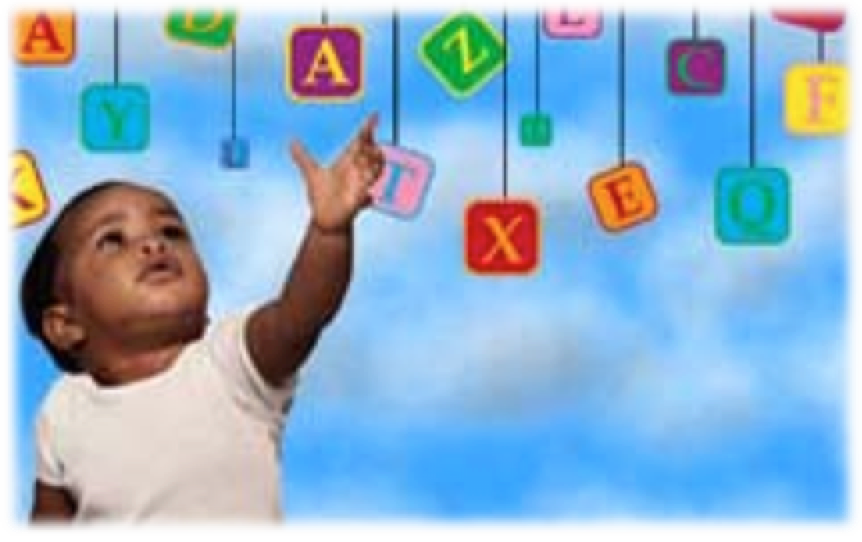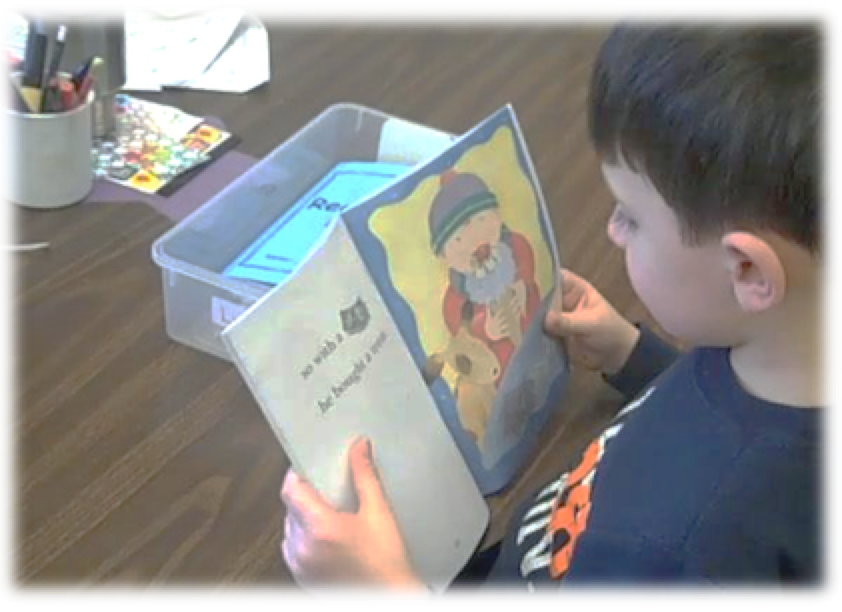Language and Learning: Stages and Phases
x
1. The Foundations of Language and Reading
Students' Affect and Experience.
A student’s linguistic and cultural background can influence his or her perception, motivation and performance on school-related tasks, particularly those involving language. Uncovering details of a student’s culture becomes an important piece to the learning process.
There are a number of factors that influence early literacy development that we will delver deeper into throughout this course (Gollnick & Chinn, 2002). They include:
- Spiritual and religious beliefs, holidays and customs

- Geography, urban or rural
- Age of parents
- Socioeconomic status
- Disability
- Migration and time of arrival
- Ethnicity and Race
- Gender Identity
- Language
These factors are probably more relevant when children are infants, before they begin formal schooling with limited exposure to the outside world. For instance, the child of a single parent family entrenched in poverty would be particularly disadvantaged with limited literacy experiences. Single parents must often work several jobs to meet the economic demands of the household and consequently becomes exhausted by the end of the day, leaving little time or energy for reading and interacting with others present in the household. When school finally begins, the child has not likely been around books and therefore does not know how to use them. Consider the following:
- 37% of students in grade 4, and 26% of students in grade 8 can’t read at a basic level.
- The greatest achievement gaps are among minority groups, with 75% of white students reading at or above basic, compared to 44% of Hispanic and 40% of African American students.
- Similar results exist for students eligible for free or reduced lunches, or students from poverty. (National Assessment of Educational Progress - NAEP)
Becoming culturally sensitive on many levels is imperative to professional practice, particularly during the early years - sociocultural, sociopolitical, psychological, and socioeconomic impacts are far-reaching. Young children are forming their initial impressions of adults and peers alike, and thus they require constant modeling and instruction to meet sequential milestones which underscore the emergence of literacy.
Oral and Written Language Instruction
Reading comprehension is a complicated process, and teaching it can be equally as complicated. Much of this involves the use of declarative knowledge, procedural knowledge and conditional knowledge  (Duffy, 1993). Teachers should start with direct instruction and then use guided practice to reach the child’s zone of proximal development (Vgotsky, 1934/1986). Eventually, students begin to perform some learning tasks more independently.
(Duffy, 1993). Teachers should start with direct instruction and then use guided practice to reach the child’s zone of proximal development (Vgotsky, 1934/1986). Eventually, students begin to perform some learning tasks more independently.
It is suggested that comprehension strategies encompass four different categories in primary education. They are detailed below:
- strategies substantiated by research and widely used
- strategies substantiated by research but not widely used
- those not substantiated by research but widely used
- instruction not widely researched or widely used but potentially promising (Stahl, 2004)
First Language Acquisition
Language acquisition is among the most impressive and fascinating aspects to cognitive development, and human evolution. What is most fascinating is how children accomplish this? What enables a child to not just learn words, but to learn how to put them together in meaningful sentences, and largely by listening. What is even more fascinating, is that regardless of where a child was born, or where they reside in the world, they all develop language similarly; the brain reacts to language in very similar, and striking, ways.
First language acquisition is described as developmental sequences. The earliest vocalizations are simply involuntary crying from babies. Soonafter, the cooing and gurgling turns into labels for expression, and the world begins to take shape around them. In the earliest weeks of life, infants are able to hear subtle differences in tone within the sounds of human voice. Not only do they distinguish the voice of mother and father, but those of other speakers. But whether they become monolingual or bilingual, it takes many months before they can develop their own vocalizations as expression, and reflect the characteristics of language they hear and respond to.
At 12 months, most babies will begin to produce words. And by the age of two, most children can reliably produce at lest 50 different words or more. About this time they begin to combine words into simple sentences, such as "Mommy" and "Juice" and "cup". These sentences are more utterances and called "telegraphic because they leave otu articles or prepositions and auxiliary verbs. Though they are functional, there are grammatical morphemes missing and the word order, or syntax, reflects the word order of the language they hear combined with words that in their world, have meaningful relationships beyond the individual words.
Within the first three years of life distinguishable and predictable patterns will emerge in their language. This has everything to do with their cognitive development. In this stage they develop gradual recognition and understanding for expressing ideas.
The acquisition of other language features begins to show up in children's language as it develops systematically, and as they move from what was heard to create and experiment with their own grammatical sentences, forms, and structures.
Negation
Children learn the functions of negation very early. They learn to comment on the disappearance of objects, to refuse a suggestion, or to reject an assertion, even at the single words stage. However, studies have shown that even though they may understand and express these functions using single words and gestures, it takes time before they can express them on their own in full sentences using appropriate words and word order. The following stages in the development of negation have been observed in the acquisition of English. Similar stages have been observed in other languages as well (Wode, 1981).